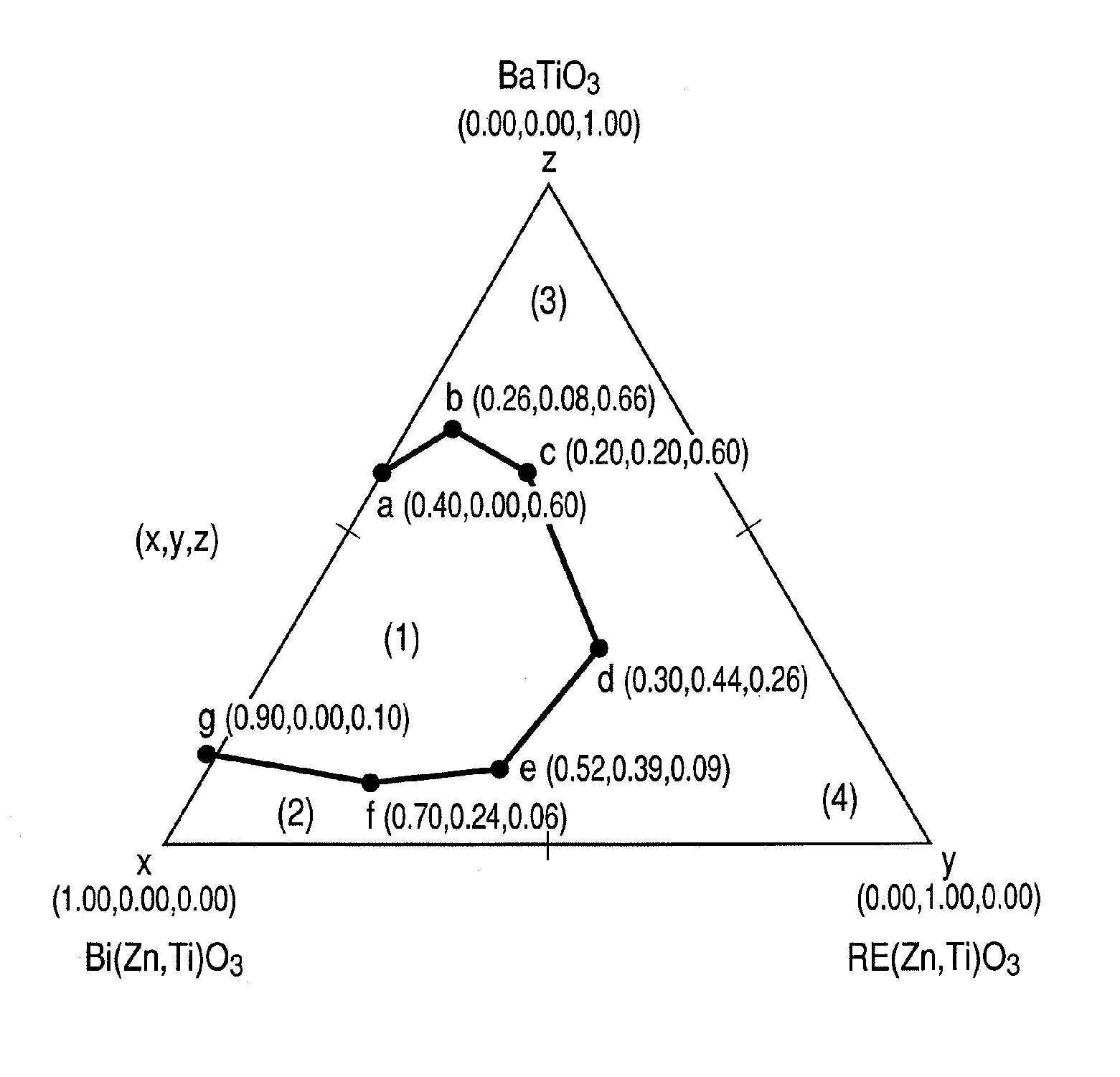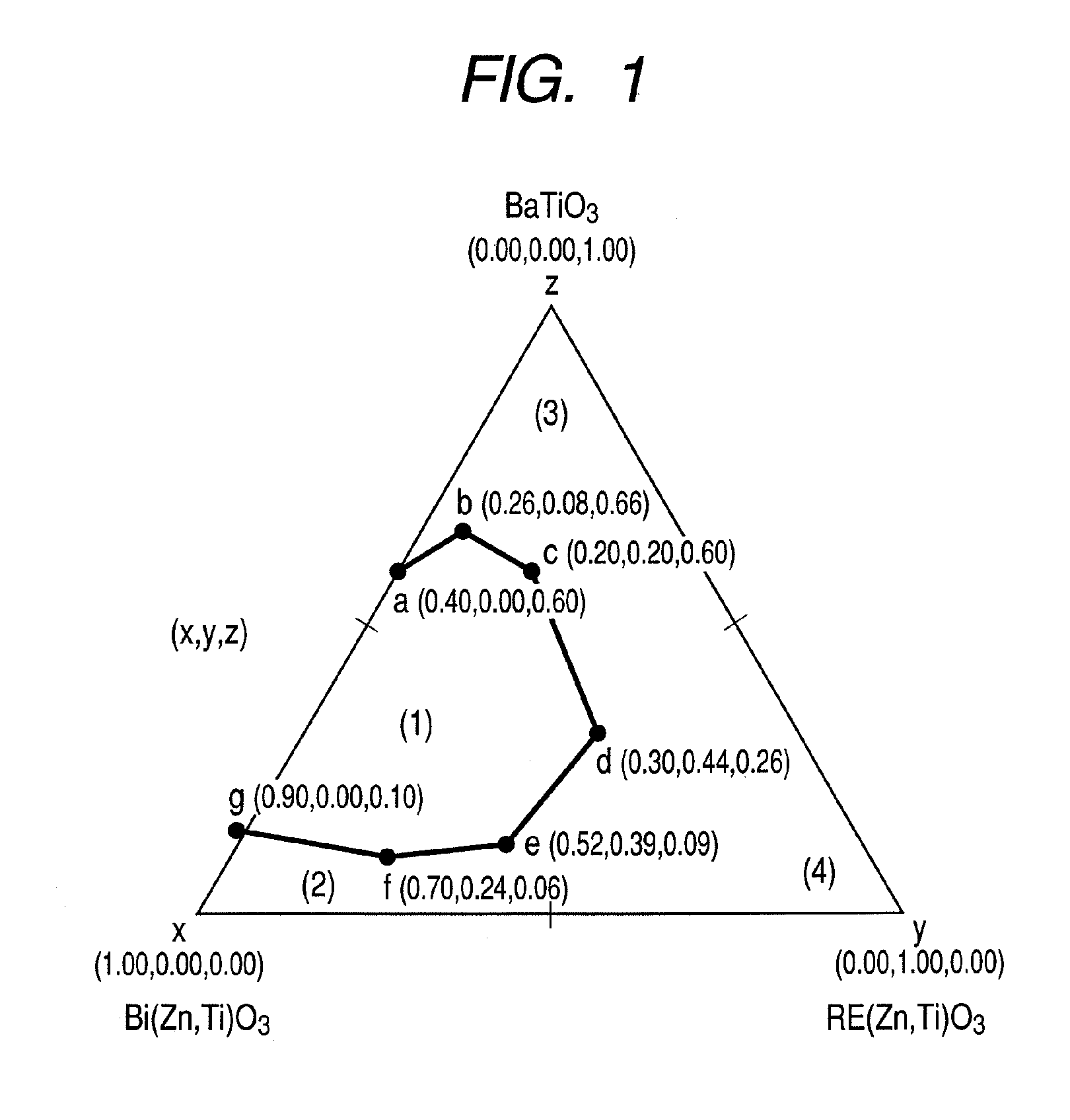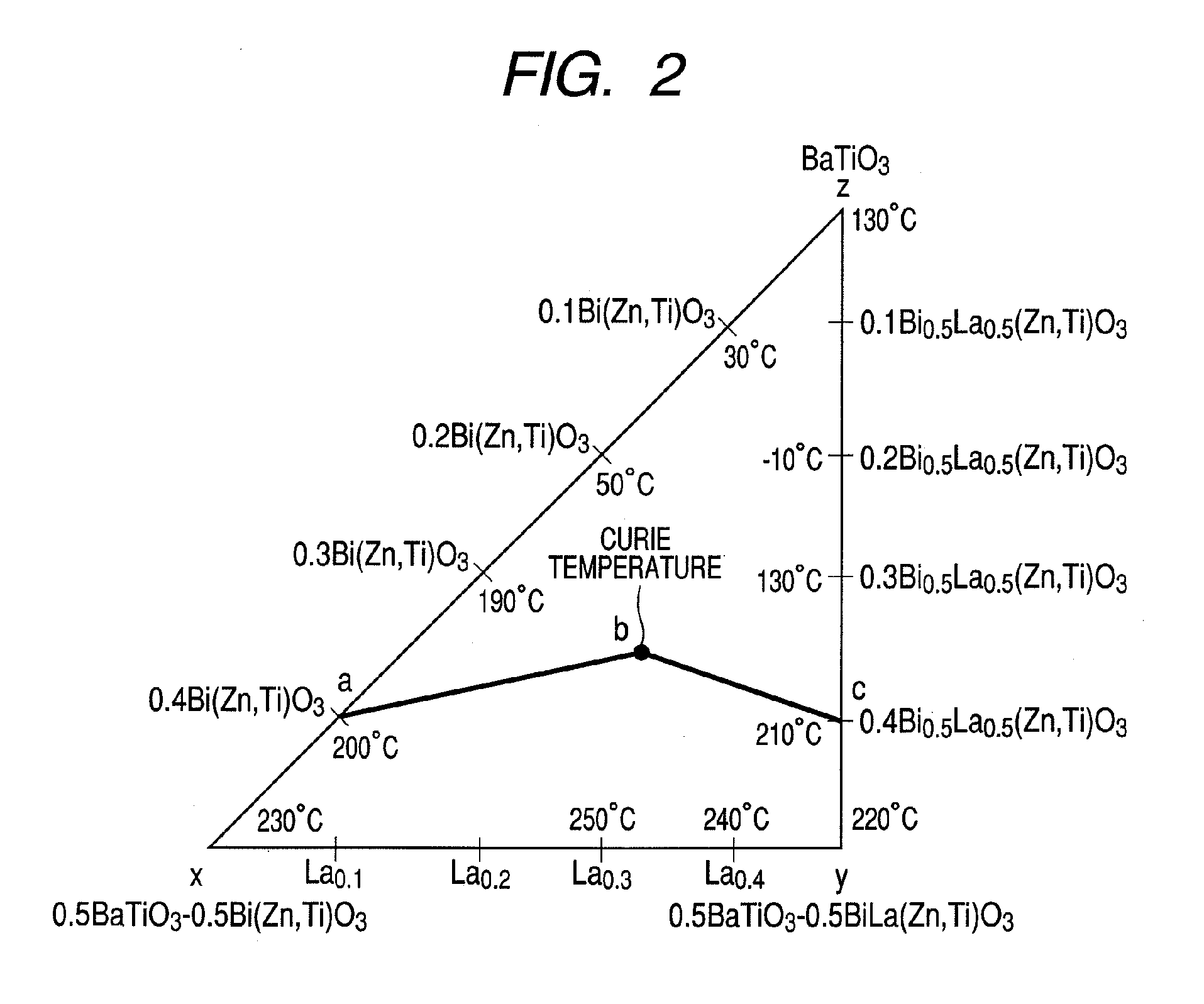Piezoelectric material
a technology of piezoelectric materials and materials, applied in the field of piezoelectric materials, can solve the problems of difficult poling procedure of bi (znsub>0.5/sub>, tisub>0.5/sub>), the influence of the environment is considered problematic, and the piezoelectric characteristics cannot be displayed, so as to achieve excellent piezoelectric characteristics, no influence on the environment, and excellent characteristics
- Summary
- Abstract
- Description
- Claims
- Application Information
AI Technical Summary
Benefits of technology
Problems solved by technology
Method used
Image
Examples
examples
Hereinafter, the present invention is described in more detail with reference to Examples.
examples 1 to 11
Examples of xBi (Zn0.5, Ti0.5) O3-yLa (Zn0.5, Ti0.5) O3-zBa (Sc0.5, Nb0.5) O3
Bi2O3, ZnO, TiO2, La2O3, BaCO3, Sc2O3, and Nb2O5 were used as oxide materials and weighed out to constitute each of the objective compositions, mixed and pulverized. About 5 g of the prepared powder was weighed out, and a solution of PVB (polyvinyl butyral) was added as a binder in an amount of 5 to 10 wt % in terms of solid content to the powder, then mixed in a mortar, dried, pulverized, molded into a disk having a diameter of 10 mm, calcined then fired to give a piezoelectric body.
The calcination was conducted at 700° C. for 2 hours, and the firing was conducted at 1100 to 1350° C. for 2 hours. The piezoelectric body was polished into a disk shape, then provided with a silver paste to form electrodes, and subjected to poling procedure with a field strength of 1 kV / mm under heating at 100° C. in silicon oil. Respective samples of the piezoelectric materials thus prepared by changing the composition of th...
example 11
Example of 0.3Bi (Zn0.5, Ti0.5) O3-0.3La (Zn0.5, Ti0.5) O3-0.4Ba (Mg0.33, Nb0.67) O3
Bi2O3, ZnO, TiO2, La2O3, BaCO3, MgO, and Nb2O5 were used as oxide materials and weighed out to constitute the objective composition, mixed and pulverized. 15 g of the prepared powder was weighed out and calcined at 900° C. for 2 hours. The calcined powder was pressed with a pressing machine for 10 minutes to give a piezoelectric body. The piezoelectric body was used as a target to form a thin film with the above composition by high frequency magnetron sputtering.
As the substrate, SrRuO3 (110) / YSZ (100) / Si (100) was used. YSZ is a ZrO2 epitaxial film containing 3.5% Y, to form the substrate having an oxide electrode SrRuO3 formed on the YSZ. A (110) piezoelectric film of 3 μm in thickness was formed at a substrate temperature of 650° C. at a gas pressure of 0.5 Pa in a mixed-gas atmosphere of Ar and O2. An upper electrode was prepared by depositing Pt in a thickness of 100 nm by DC sputtering and sub...
PUM
| Property | Measurement | Unit |
|---|---|---|
| piezoelectric | aaaaa | aaaaa |
| Curie temperature | aaaaa | aaaaa |
| piezoelectric properties | aaaaa | aaaaa |
Abstract
Description
Claims
Application Information
 Login to View More
Login to View More - R&D
- Intellectual Property
- Life Sciences
- Materials
- Tech Scout
- Unparalleled Data Quality
- Higher Quality Content
- 60% Fewer Hallucinations
Browse by: Latest US Patents, China's latest patents, Technical Efficacy Thesaurus, Application Domain, Technology Topic, Popular Technical Reports.
© 2025 PatSnap. All rights reserved.Legal|Privacy policy|Modern Slavery Act Transparency Statement|Sitemap|About US| Contact US: help@patsnap.com



